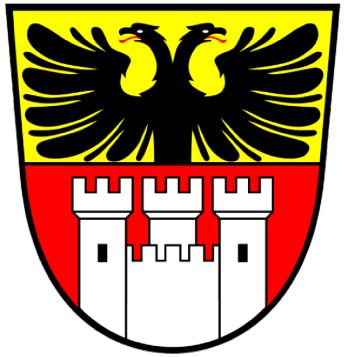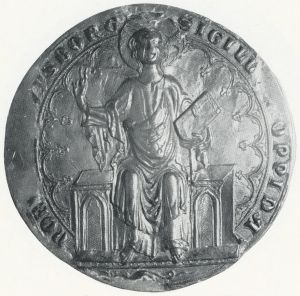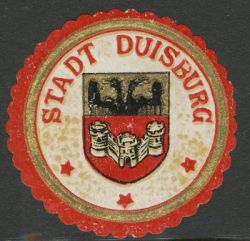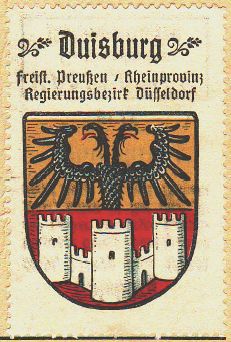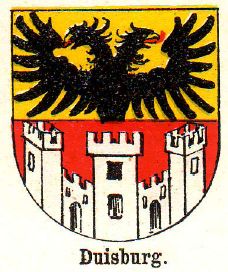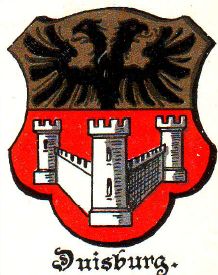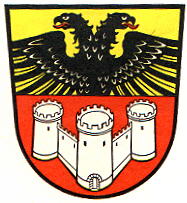Duisburg
| Heraldry of the World Civic heraldry of Germany - Deutsche Wappen (Gemeindewappen/Kreiswappen) |
DUISBURG (1929-1935 Duisburg-Hamborn)
State : Nordrhein-Westfalen
District (Kreis) : Duisburg
Additions : 1905 Meiderich, Ruhrort (1904 Beeck); 1929 Bissingheim, Buchholz, Ehingen, Großenbaum, Hamborn, Huckingen, Hüttenheim, Mündelheim, Rahm, Serm, Wedau; 1975 Homberg (1921 Essenberg, Hochheide), Rumeln-Kaldenhausen, Rheinhausen, Rheinkamp (partly), Walsum (partly)
Origin/meaning :
The arms were officially granted on January 31, 1977.
Duisburg became a city in the late 12th or early 13th century. The oldest known seal of the city dates from between 1209-1224 and showed Christ sitting on a throne. The three later great seals of the city, from the 13th and 14th century, all show the same basic composition. The seals were used until the 17th century.
| The third seal of Duisburg from the 14th century |
In a contraseal from the 15th century the present arms appear for the first time. As proper arms they have been used since the middle of the 16th century. The upper part shows the imperial eagle, whereas the lower part may represent the city itself. The red and silver probably refer to the Hanseatic League, to which the city belonged.
The arms did not change after the merger in 1974, but the shape of the castle in the image used by the city is changed slightly.
| Seal of the city from around 1900. |
The arms in the Kaffee Hag albums +/- 1925 |
| The arms shown around 1900. |
The arms shown around 1900. |
| The arms in the Abadie albums, 1930s. |
The arms in the 1960s. |
Literature : Stadler, 1964-1971, 8 volumes; Nagel, R. : Rheinisches Wappenbuch, Köln, 1986

